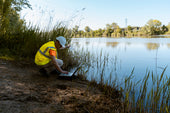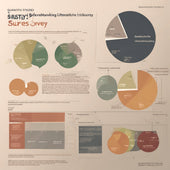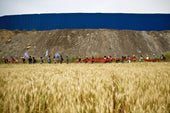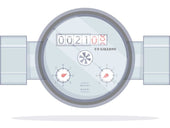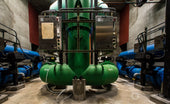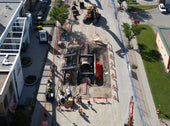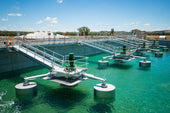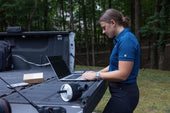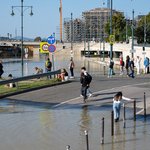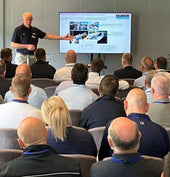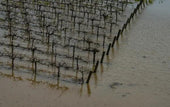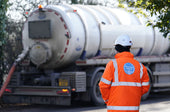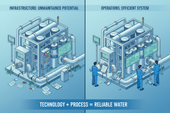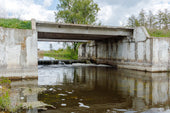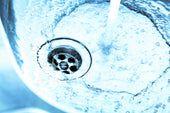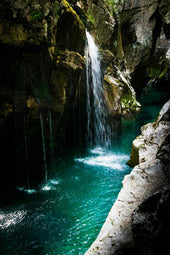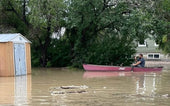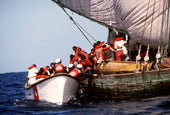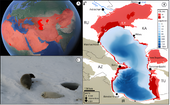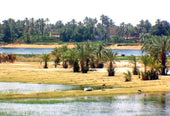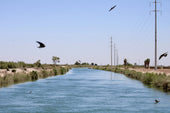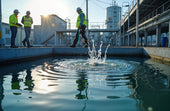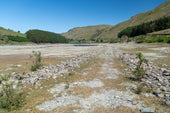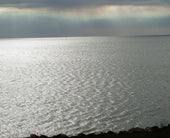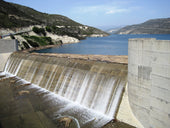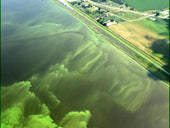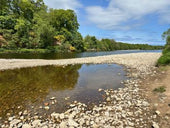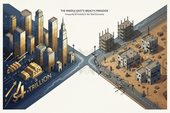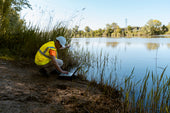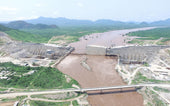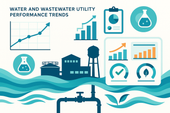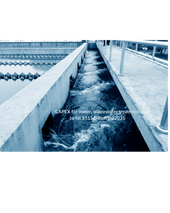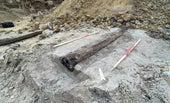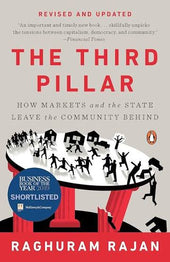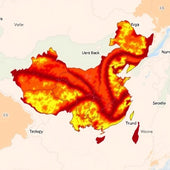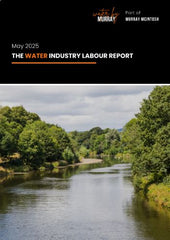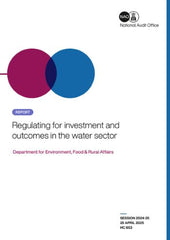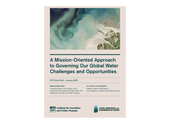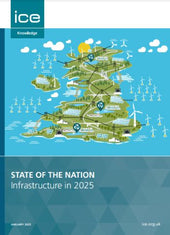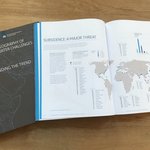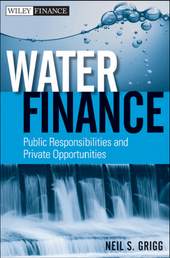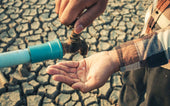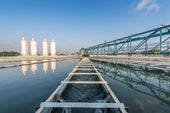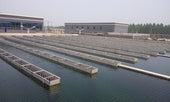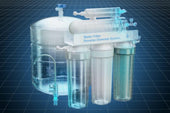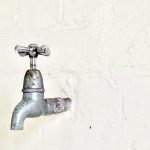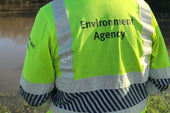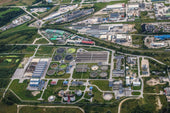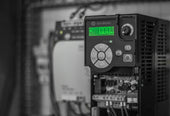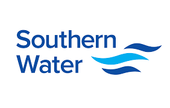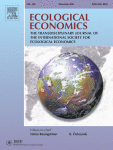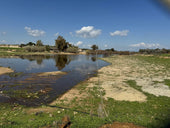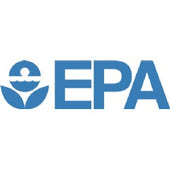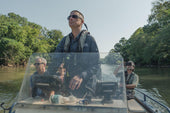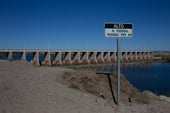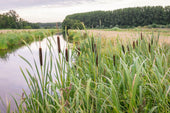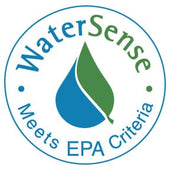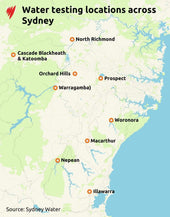
Underwater noise modeling – a valuable tool in environmentally sound investment planning
Underwater noise – an invisible threat that can have a real impact on marine life. In an era of rapid development of offshore wind farms and offshore infrastructure, noise modeling is becoming not only a legal requirement, but also a key tool for environmental protection. Find out how modern tools such as MIKE UAS can predict the effects of acoustic human impacts on marine ecosystems – before the first pile is even driven.
Underwater noise – why do we pay so much attention to it?
Any sound generated by human activity that can interfere with the ability of marine animals to perceive natural sounds in their environment is called underwater noise. Its main sources include ship traffic, underwater explosions, offshore infrastructure construction and seismic surveys, among others. Sound in water propagates much faster and over greater distances than in air, making its impact on the marine environment particularly strong.
Anthropogenic noise in the marine environment can have serious consequences for the lives of its inhabitants. Many organisms – especially marine mammals – use echolocation for spatial orientation, communication and hunting. Excessive noise can cause them stress, disorientation, disruption of vital functions and even lead to hearing injury or death.
It is not without reason that underwater noise has been identified as one of the eleven status features and environmental pressures in the Marine Strategy Framework Directive (MSFD). The directive requires EU member states to:
- Assessing underwater noise levels and their impact on the environment,
- establishing monitoring indicators,
- Develop measures to reduce the impact of noise on marine organisms.
For more than a dozen years, underwater noise has been an important component of environmental impact reports prepared for offshore developments. It is analyzed in terms of the sources of noise at different stages of the investment, their potential impact on the marine environment, and an assessment of the impact on sensitive species, such as porpoise and seals. The basis for this assessment in the case of offshore wind farms has become the modeling of noise propagation in the aquatic environment. If a negative impact is found, an element of the report should also be the proposal of appropriate mitigation measures, in this case the implementation of technologies and methods to reduce underwater noise emissions, as well as a plan for conducting monitoring at subsequent stages of the investment.
What is underwater noise modeling?
Underwater noise modeling is the process of numerically predicting the propagation of sound in water. It takes into account both the characteristics of the noise source and the characteristics of the water environment – such as salinity, temperature, depth or seabed structure.
Why do we do underwater noise modeling?
Underwater noise modeling is done for several important purposes.
The ecosystem impact assessment identifies how noise affects marine species, especially those that use echolocation.
Meeting regulatory requirements helps investors and state institutions comply with the requirements of the IRDS and national regulations by verifying that noise levels are within acceptable standards and do not adversely affect the environment.
Optimization of infrastructure investments: modeling makes it possible to plan measures to minimize noise, for example, in the construction of wind farms, ports or resource extraction.
Maritime space planning and management: based on the results of modeling, protection zones can be designated where noise-generating activities are restricted.
Protecting the health and well-being of marine organisms: modeling results make it possible to predict the effects of noise in the context of migration, reproductive behavior and other key biological processes so that effective protective measures can be implemented.
MIKE UAS – a state-of-the-art underwater noise modeling tool
MIKE UAS ( Underwater Acoustic Simulator) is an advanced tool developed by DHI, a company specializing in environmental modeling.

It is used to simulate and analyze sound propagation in the marine environment. In doing so, it takes into account physicochemical factors, topography and seabed structure, and its functionality includes:
- Modeling the propagation of sounds from different sources,
- Creating visualizations of the spread and extent of noise impacts,
- Integration with hydrodynamic models and agent-based modelling (ABM) simulations to assess the impact of noise on habitat integrity and animal migration.
The tool has already been successfully used in the market for many years. The technical and content teams are successively improving it to better reflect the variability of sound propagation (propagation) with changing environmental conditions, contributing to more accurate predictions of noise impacts on marine organisms.
MIKE UAS has been used in many projects in Poland and abroad. Some of the more interesting ones include:
1. noise modeling and environmental impact assessment of geophysical surveys
- Description: In this report, underwater noise propagation was modeled using MIKE UAS to assess the impact of pulsed noise from geophysical surveys on Atlantic herring and dwarf fin whales in the Celtic Sea.
- Source: Noise modelling and environmental risk assessment of a geophysical survey MARA – The Maritime Regulator
2. realistic approach to sound propagation in environmental impact assessment
- Description: This article presents the application of MIKE UAS in environmental impact assessments, focusing on modeling noise propagation from mobile sources. It discusses approaches using mobile source modeling and the use of agent-based models (ABMs) to simulate the response of marine animals to noise.
- Source: Towards a Realistic Approach of Sound Propagation in EIAs: How to Represent Moving Sources and Moving Receivers DHI+2pub.dega-akustik.de+2DHI+2
3. impact of piling noise on marine mammals
- Description: The study used MIKE UAS to model the noise generated by driving large diameter piles during the construction of offshore wind farms. The impact of the noise on marine mammals such as porpoises and seals was analyzed, considering different scenarios and mitigation measures.
- Source: Effect of impact pile driving noise on marine mammals pub.dega-akustik.de+6AIP Publishing+6Regulations.gov+6
Technical dimension of underwater noise modeling
Acoustics as a branch of physics dealing with the study of sound – its formation, propagation, interaction with matter and reception by humans and other living beings – is not a simple field. It requires specialized knowledge and experience in understanding the processes and behavior of sound in the environment. Underwater acoustics studies these processes in the aquatic environment.
When embarking on modeling work, it is crucial to agree on a methodological approach and collect the data that will be used in the analyses. As with most analyses, the better the quality and more reliable the data, the more accurate the modeling results. The modeling work required to assess the extent and area of impacts can be divided into several stages:
- collecting available data,
- Sound source definition (sound exposure level and frequency spectrum),
- numerical noise modeling,
- calculation of biological effects using internationally acceptable criteria (if applicable).
The next steps are described in detail below.
Data used for modeling
Sound propagation in seawater is affected by several factors, including temperature, pressure, salinity and also acidity (pH). Therefore, information on these properties is important to determine the assumptions made in the model. In addition, it takes into account the shape of the bottom, which is an important factor determining the extent of sound propagation in the aquatic environment, as well as the geoacoustic properties of the sediments that build the substrate.
Sound source
Depending on the type and stage of individual projects, the spectrum of the sound source is developed on the basis of literature data or by means of additional modeling of the sound source.
For noise generated during piling, the sound source spectrum is developed based on finite element data and publicly available measurement data collected in the immediate vicinity of the pile. The scaled sound source spectrum is obtained by applying frequency-dependent scaling laws for pile diameter and water depth to the measurements taken.
Sound source modeling is recommended when the exact input parameters are known, such as in the case of the final selection of the type of foundation for the construction of offshore wind farms and when the geotechnical conditions of the subsoil of the study area are recognized.
Technical details of the modeling and its results
Sound propagation is modeled using the Range-dependent Acoustic Model (RAM), which is based on the parabolic equation method, assuming that emitted energy dominates backscattered energy. The model focuses on the propagation of noise in a distant field in order to provide a basis for conducting environmental impact assessments.
UAS uses the RAM code based on the sound propagation model developed by Collins (Collins, 1993). It takes into account changes in the rate of sound attenuation in the water column and allows the use of the Francois and Garrison empirical model, which is based on information about salinity, temperature and pH in the water column. The sound source is modeled as a point multidirectional, and the modeling range is selected individually as needed. For environmental impact assessments, the range is up to 150 km, and specific 1/3 octave bands with center frequencies from 20 Hz to 4 kHz are modeled.
Based on the resulting calculations, maps and cross-sections are made showing sound exposure levels as a function of distance from the sound source.


Biological effects
The results of the modeling are used for environmental impact assessments, the key is to interpret them against existing criteria for exposure of individual marine organisms to noise.
To calculate biological effects, DHI uses the scheme presented by Thomsen et al. (2021). It assumes that there are several overlapping noise impact zones, the size of which depends mainly on the relative distance of animals from the location of the sound source. In the process of assessing the environmental impact of projects, this study focuses on the behavioral response and hearing damage (TTS, PTS and reversible hearing damage in the case of swim bladder fish), as these are the effects considered due to current regulations.

Based on the acoustic modeling performed, noise impact zones on marine organisms (mammals, fish) are estimated as distances from the sound source expressed in kilometers.

Practical dimension of underwater noise modeling
In Poland, underwater noise modeling has been used to assess its impacts on marine organisms for more than a dozen years. Unfortunately, this standard imposed by regional environmental directorates has so far only applied to the construction of offshore wind farms, while underwater noise is also generated in many other activities. DHI has been involved in most of the projects carried out for the construction of offshore wind farms, constantly improving the methodology for approaching the analyses in accordance with current scientific knowledge. Environmental impact assessment reports containing the results of noise modeling analyses using MIKE UAS for offshore wind farms (Baltic II, Baltic III, Batica 1, Baltica, Baltic Power, BC-Wind, Baltic East) are available on the website of the RDOŚ in Gdansk.
Currently, modeling is used for, among other things:
- Offshore wind farms: underwater sounds are generated during all stages associated with the construction, operation and decommissioning of an offshore wind farm (OWF). The greatest risk is associated with underwater noise emitted during construction, due to the sounds generated when piles are driven into the seabed.
- construction of port and hydrotechnical infrastructure: the construction of port and hydrotechnical infrastructure elements, as in the case of wind farms, may be accompanied by piling. In this case, however, these elements are characterized by a much smaller diameter, generating lower noise levels, which, however, are not indifferent to animals living in the aquatic environment.
- oil industry activities: used as part of geological structure and mineral exploration, air-guns generate high-energy sounds that can also affect marine organisms.
Porpoise conservation and underwater noise modeling
It is worth paying special attention to the only representative of cetaceans in the Baltic Sea. It has the status of a critically endangered species. Porpoise conservation and underwater noise modeling are closely linked, as it is one of the threats to the species. Porpoises, like other marine mammals, rely on echolocation, or sending sounds and receiving their acoustic echoes, to orient themselves in space, communicate among themselves and hunt. Noise generated by human activities (detonations, construction work or seismic surveys) can interfere with these crucial processes, leading to disorientation, stress, hearing damage or, in extreme cases, even death for the animals.
In countries with intensive harbor porpoise conservation efforts, such as Poland (where the Baltic harbor porpoise is an endangered and actively protected species), underwater noise modeling is crucial for decision-making related to marine management and species conservation. As part of environmental impact assessments (EIAs) for offshore construction projects, noise modeling is used to predict how potential noise sources may affect harbor porpoises and other marine organisms.
In conclusion, underwater noise modeling is an important tool in harbor porpoise conservation, allowing to identify noise hazards, predict their impact and implement measures to minimize their negative impact on this endangered species.
Summary
Underwater noise modeling is not just a formal requirement in the environmental impact assessment process – it is first and foremost a tool for real protection of sensitive marine ecosystems. Thanks to modern technologies such as MIKE UAS, investors and institutions planning offshore activities can predict and then minimize the impact of noise on aquatic organisms at an early stage. This approach not only enhances project compliance with the requirements of national and EU law, but also allows investments to be carried out in a responsible, sustainable and socially acceptable manner. In an era of increasing importance of biodiversity protection, the use of acoustic tools is becoming a standard of good investment practice.
Literature:
1. Thomsen, F., Mendes, S., Bertucci, F., Breitzke, M., C. E., Cresci, A., . dos Santos, M. E. (2021). Addressing underwater noise in Europe: Current state of knowledge and future priorities. Future Science Brief 7 of the European Marine Board (Ed. by P. Kellett, R. van den Brand, B. Alexander, A. Muniz Piniella, A. Rodriguez Perez, J. van Elslander & J.
2. Collins, M. (1993). A split-step Padé solution for the parabolic equation method. The Journal of the Acoustical Society of America. (93): 1736-1742.



